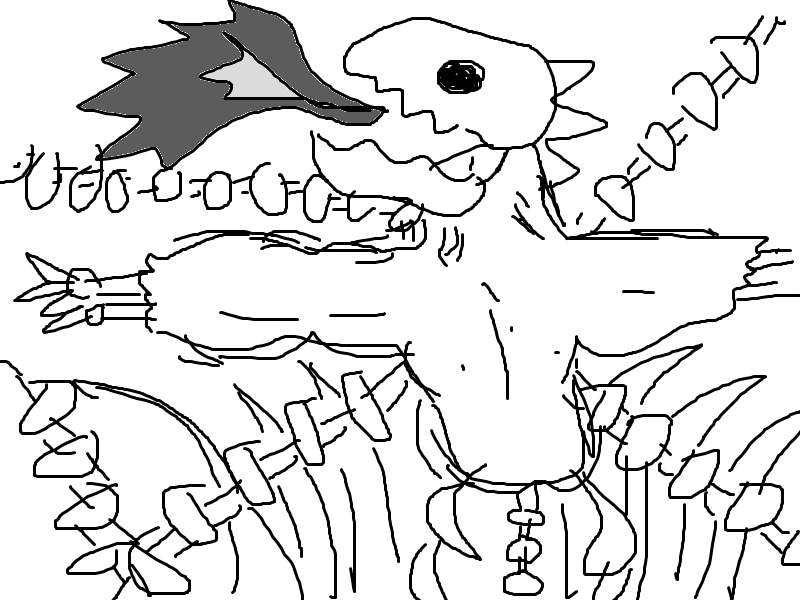
On Recent Paleontological Delights

On Recent Paleontological Delights
“It is not often that we find megafauna of this size in tropical climates,” claimed the university paleontologist. He held the object up to the light and told the experimental architecture student that the creature it came from was twice as long as a school bus and weighed about as much as sixty-seven broad, hearty children. The experimental architecture student believed the university paleontologist because his teeth looked bright and sharp under the halogen lamps, unlike that of a man who is known to lie.
The experimental architecture student was fitting ribs of a miniature structure into the three-dimensional PLA print of the mall. Her design dictated some of the shop windows be eviscerated to make room for the structure’s span. This was the most controversial arrangement in an otherwise-uneventful conference that took all of five days over the remnants of the dig, where visitors were handed bone-encrusted lanyards and cutlery to feast on the dig site’s remains.
The national implications were not lost on the university’s sponsors. A natural history museum was erected on campus where once the theatre department had stood, and an entire wing was dedicated to the region’s fast-decaying prehistory. The walls were caked in dirt from the dig site set with industrial fixative spray. The overall atmosphere was described by critics as “funereal” and “oppressive”, which tickled the main donor of the exhibits, the uncle of the experimental architecture student, who was a rotund man with small eyes whose nickname was ‘Rex’.
The experimental architecture student got her news of the dig from a paleontology grad student from Leeds who had flown here upon hearing of the discovery. He believed his work in uncovering the region’s past made up for his ancestors’ misdeeds. In his thick accent over imported bottles of Amstel he called it ‘postcolonial reparations’. The experimental architecture student could only focus on his surreptitiously-snapped photographs of bones, which were silhouetted against black glass under the laboratory’s lights, positioned as if to suggest interlocking limbs.
After the high of the conference had subsided all participants were invited to submit ideas for the exhibition’s name. Each proposal was vetted by a special board which consisted of paleontologists from all over the world, as well as a single branding executive allied with the university’s brass. Said branding executive was found dead in his hotel room a few nights before the final decision with deep incisor marks lining the insides of his thighs.
Spectators were confused at the result of the final assembly, which occupied three floors of the prehistorical wing. It cut into the sides of the walls and required some of the earth to be removed. This increased ventilation and natural light into the central area, which was filled by a towering structure of bone and chicken wire, resembling no known past or present biological form, twisted together into the shape of an immense, gaping maw.